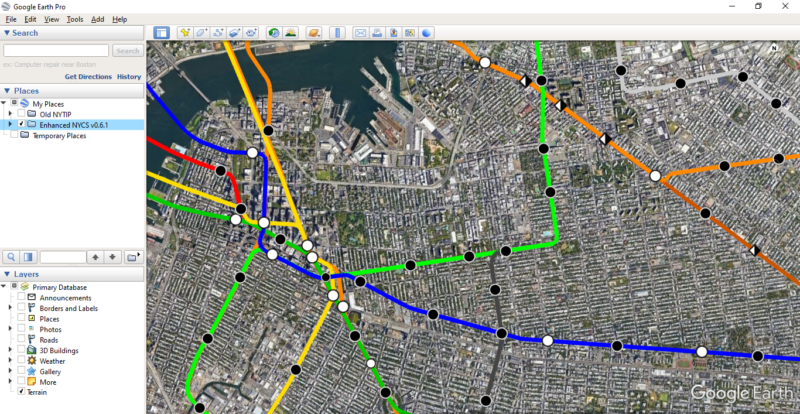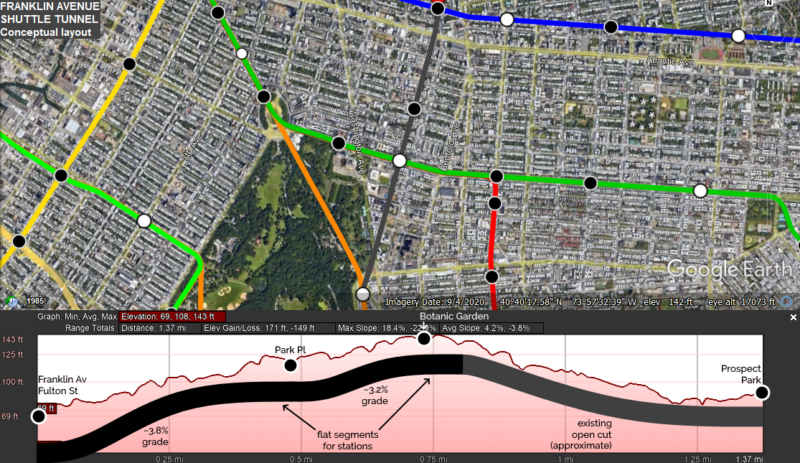UPDATE (03.05.2022): Post lightly edited for clarity.
On this edition of the NYTIP INSIDER, I will discuss forthcoming updates to the enhanced NYC Subway that provide even greater improvements over the status quo.
The “Six-Minute City”
First introduced by well-known transit researcher Alon Levy and formally recommended by former NYC Comptroller Scott Stringer, the “six-minute city” refers to an operating paradigm where each subway line operates at least every 6 minutes during daytime hours each day. With 6 minutes as the base headway for each line, each trunk line would see local and express service at least every 3 minutes – a massive improvement over current service levels. The NYC Comptroller report linked above recommends running such service from 5:00 AM to 9:00 PM on weekdays, and 8:00 AM to 10:00 PM on weekends; consequently, the enhanced NYC Subway would include an earlier start to the AM peak.
My initial goal for each subway line under NYTIP was peak service every 4 minutes or better, off-peak service every 8 minutes or better, and overnight service every 15 minutes (4-8-15 for short). Implementing the “six-minute city” changes this to 4-6-15 – and honestly, it’s a great idea.
There are, however, some physical constraints that preclude a 4-minute peak headway on some lines – these include the 2 and 3 trains (142nd Street flat junction), the C train (single-track terminal at Bedford Park), and the E and J/Z trains (switch too far from Jamaica Center terminus). These trains thus run every 5 minutes during peak hours under NYTIP (except the E, which gets an extra 3 TPH from Hillside Avenue).
The Enhanced Franklin Avenue Shuttle
Due to single tracking north of Botanic Garden, the Franklin Avenue shuttle currently runs every 10-12 minutes during the day. In exploring improvement ideas, I drafted a map on Google Earth depicting an extended Franklin Avenue shuttle:
[Fig. 1] Draft of an earlier version of the enhanced NYC subway depicting an extended Franklin Avenue shuttle.
I initially thought of double-tracking the shuttle and extending it to Bedford – Nostrand Avenues station on the G for increased connectivity. I have since scratched the extension – for now – and will only propose double-tracking the existing shuttle to allow service increases. The Twitter thread below discusses a possible tunnel alignment for the shuttle, which would replace the elevated portion north of Sterling Place:
As Twitter user A320Lga suggests, replacing the elevated portion with a tunnel is feasible even if you allow for ungraded stations. I sketched an approximate path for the tunnel in the figure below.
[Fig. 2] Conceptual layout of the Franklin Avenue shuttle tunnel.
Weekend Peak Express Service
The six-minute city concept affords an opportunity to provide weekend peak-directional express service on several lines without sacrificing local service frequency. The Bronx, which lacks trunk lines, would benefit the most from such an investment; this is a no-brainer for the Concourse (C/D) and White Plains Road (2/5) lines. Applying Alon’s frequency matching principle, the same could be done on the 6. This would allow Pelham local and express trains to run every 6 minutes each; combined Lex local service every 3 minutes would match the combined off-peak frequency of the Lex express (4/5 lines).
I’m a bit iffy on weekend peak-directional express service for the 7 and the J, given the heavy local ridership on the former and the short express run on the latter, though it could work for both.
The table below shows the typical service span for peak-directional express services under NYTIP.
| Time and Direction | Toward Manhattan | From Manhattan |
| Weekday | 5:00 AM – 12:45 PM | 1:15 PM – 9:00 PM |
| Weekend | 8:00 AM – 2:45 PM | 3:15 PM – 10:00 PM |
To Skip or Not to Skip?
Service frequency is a key component of the six-minute city concept, which brings me to the J/Z trains. Infrastructural constraints limit combined J/Z service to 12 TPH. Consequently, the so-called “skip-stop” stations – those skipped by either a J train or Z train during peak hours – only get a train every 10 minutes, which is suboptimal. An alternative option is replacing J/Z skip-stop service with doubled J service. J trains would make all stops from Jamaica Center to Myrtle Avenue, but would still run peak-directional express service between Myrtle and Marcy Avenues in Brooklyn. (The enhanced NYC Subway already includes island platforms at Marcy Avenue to allow faster express service over this segment.)
Under the present pattern, J trains skip 7 stops between Sutphin Boulevard and Myrtle Avenue, while the Z skips 6. Using the “1/2 minute per station skipped” rule of thumb, this results in 3 to 3 1/2 minutes of travel time saved. Replacing this with 12 TPH worth of J service cuts the expected wait time at skip-stop stations from 5 minutes to 2 1/2 minutes, saving 2 1/2 minutes of waiting time.
As of now, I’m inclined to leave the service pattern as is with improved spans, making the J/Z an exception to the 6-minute rule along with the A train branches in Queens and the Rockaway shuttle. However, the skip-stop pattern would only run during the height of rush hour – about 2 hours in each direction. This may change in the future.


